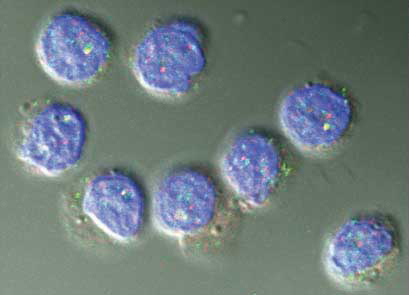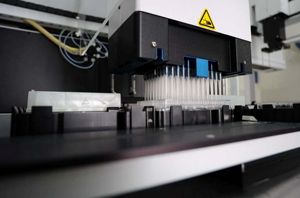
Damage control. Regulatory T cells (Tregs) help quiet down certain immune cells – reducing the production of substances that damage the motor nerves. Image: Kathryn T. Iacono PhD, University of Pennsylvania School of Medicine.
Many people with ALS survive two to five years. But at least 10% of people with ALS live at least 10 years after being diagnosed with the disease.
Some scientists suspect that the reason some people might be more vulnerable to ALS may be in part due to kinks in their cellular armor. People who progress more quickly appear to have fewer numbers of regulatory T cells (Tregs). Key watchdogs that help keep neuroinflammation in check – potentially slowing down the progression of the disease.
Now, a US research team led by Georgia Regents University’s Jin-Xiong She PhD introduce a method to rapidly identify medicines that boost the numbers of Tregs and their policing abilities.
The strategy may help researchers identify new drugs for ALS – including existing FDA-approved medicines that can be more rapidly evaluated as treatment strategies for the disease.
The study is published next month in Biochemical Pharmacology.
Tregs may help keep ALS in check by reducing inflammation– the fuel that drives progression of the disease. The immune cells quiet down microglia and other cellular invaders that infilitrate the brain and spinal cord – reducing the production of neurotoxic substances that further damage the motor nerves.
A growing number of researchers therefore suspect that boosting populations of Tregs might help slow ALS in its tracks. Infusions of Tregs reduce astrocyte and microglia-mediated destruction of the motor nerves in mouse models of disease. And, appear to delay disease onset and slow muscle decline.

Screening room A new method may enable researchers to more quickly identify potential medicines for ALS. Image: Maya Schuldinger PhD, Weizmann Institute of Science, Israel.
What’s more, increasing numbers of Tregs might extend survival of people with the disease. People with ALS who live at least six years post-diagnosis appear to have at least three times the number of these cells in circulation compared to those who survived at most two years with the disease. And, their progression rate appears to correlate with the number of Tregs racing through their bloodstream.
But how to effectively boost Tregs and/or their anti-inflammatory abilities in people with ALS remains unclear.
Now, researchers introduce a method to identify medicines that might do just that. The ‘high-throughput’ technique is expected to enable researchers to rapidly screen tens of thousands of potential drugs for the disease.
The strategy may also help scientists identify treatments for a wide-range of medical conditions including cancer, diabetes, multiple sclerosis and transplant rejection.
***
To learn more about the role of the immune system in ALS and emerging immunomodulators to treat the disease, check out Gilenya, giving ALS the fingo? and NP001, a quiet riot for ALS?
References
Henkel, J.S., Beers, D.R., Wen, S., Rivera, A.L., Toennis, K.M., Appel, J.E., Zhao, W., Moore, D.H., Powell, S.Z. and Appel, S.H. (2013) Regulatory T-lymphocytes mediate amyotrophic lateral sclerosis progression and survival. EMBO Molecular Medicine 5(1), 64-79. Abstract | Full Text
Beers, D.R., Henkel, J.S., Zhao, W., Wang, J., Huang, A., Wen, S., Liao, B. and Appel, S.H. (2011) Endogenous regulatory T lymphocytes ameliorate amyotrophic lateral sclerosis in mice and correlate with disease progression in patients with amyotrophic lateral sclerosis. Brain 134(5), 1293-1314. Abstract | Full Text
Banerjee, R., Mosley, R.L., Reynolds, A.D., Dhar, A., Jackson-Lewis, V., Gordon, P.H., Przedborski, S. and Gendelman, H.E. (2008) Adaptive immune neuroprotection in G93A-SOD1 amyotrophic lateral sclerosis mice. PLoS One 3(7), e2740. Abstract | Full Text
Beers, D.R., Henkel, J.S., Zhao, W., Wang, J. and Appel, S.H. (2008) CD4+ T cells support glial neuroprotection, slow disease progression, and modify glial morphology in an animal model of inherited ALS. Proceedings of the National Academy of Sciences 105(40), 15558-15563. Abstract | Full Text